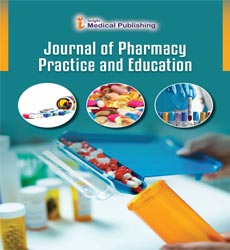Application of a mixture experimental design for the development of modified release mesalazine mini-tablets in capsules
Abstract
tatement of Problem: Mesalazine, 5-aminosalicylic acid (5-ASA), is an anti-inflammatory drug used to treat inflammatory bowel disease and a plethora of other gastrointestinal disorders. Aiming at exploring the in vitro modified release profile of Mesalazine from solid hydrophilic matrices, we employed experimental design for the optimization of mini-tablets composition. The development of modified release dosage forms of Mesalazine is important, mainly because of its hydrophilic character (ClogP=1.0562). Methodology & Theoretical Orientation: Experimental design has an important role in pharmaceutical sciences. Among others, mixture design gains an increasing interest in the development of novel drug formulations. In the present work, a mixture design was used to study the effect of three excipients (Guar Gum, Dextran and HPMC (Hydroxypropylmethylcellulose) K15M) on the tablet characteristics. These excipients were used as factors with a constant sum of 40 mg per mini-tablet, whilst the drug release at 2 h, 5 h and 12 h, were selected as responses. Desirability function was utilized for a composition that satisfies all requirements. It was proven that the presence of Dextran is very critical and therefore the vast majority of the 40 mg sum of excipients should be Dextran. Conclusion & Significance: The current study indicates the importance of mixture design combined with desirability function in the qualitative and quantitative selection of the appropriate excipients involved in matrix formulations. Recent Publications 1. Campregher C, Gasche C (2011) Aminosalicylates. Best Practices and Research Clinical Gastroenterology. 25(45):535-546. 2. Grigori K, Loukas Y L, Malenovi A, Samara V, Kalaskani A et al. (2017) Chemometrically assisted development and validation of LC-MS/MS method for the analysis of potential genotoxic impurities in meropenem active pharmaceutical ingredient. J Pharm. Biomed Anal. 145:307- 314. 3. Vatsaraj N, Zia H, Needham T (2002) Formulation and optimization of a sustained-release tablet of ketorolac tromethamine. Drug Delivery. 9(3):153-159. 4. Vlachou M, Siamidi A, Konstantinidou S, Dotsikas Y (2016) Optimization of controlled release matrix formulations of the chronobiotic hormone melatonin via experimental design. J Pharm. Drug Deliv. Res. 5:6. 5. Cafaggi S, Leardi R, Parodi B, Caviglioli G, Bignardi G (2003) An example of application of a mixture design with constraints to a pharmaceutical formulation. Chemo Intel Lab Systems. 65:139-147
Open Access Journals
- Aquaculture & Veterinary Science
- Chemistry & Chemical Sciences
- Clinical Sciences
- Engineering
- General Science
- Genetics & Molecular Biology
- Health Care & Nursing
- Immunology & Microbiology
- Materials Science
- Mathematics & Physics
- Medical Sciences
- Neurology & Psychiatry
- Oncology & Cancer Science
- Pharmaceutical Sciences
